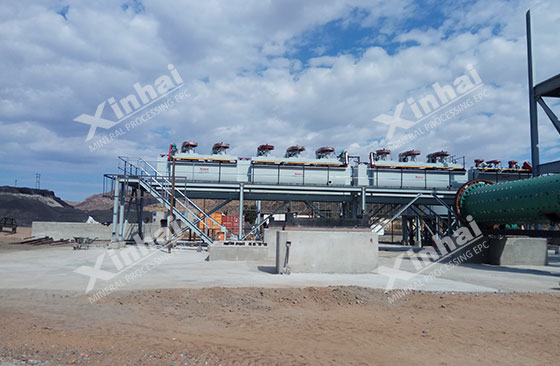
As traditional, easily processed copper ores are depleted, and with growing global demand—particularly in electronics, electric vehicles, and green energy—the development of refractory copper ores has become essential. Valuable types of these ores include magmatic copper-nickel sulfide, porphyry copper, and stratiform sedimentary deposits. Since these ores are complex and contain low copper grades, appropriate beneficiation methods need to be selected based on the specific ore type. Below, we’ll explore methods like copper flotation and hydrometallurgical processes for different refractory copper ores.
In general, flotation is the standard method for treating single sulfide copper ores. This classic process effectively separates copper minerals from gangue minerals, allowing for efficient recovery of copper concentrate. For polymetallic sulfide ores, due to the significant differences in the composition and properties of the various minerals, a single process is often inadequate for achieving optimal separation. Therefore, multiple beneficiation methods are combined to improve recovery rates and separation efficiency. Common methods include mixed flotation, preferential flotation, mixed preferential flotation, as well as combined flotation with gravity separation, magnetic separation, and flotation with hydrometallurgical processing.

For oxidized ores, combined flotation and hydrometallurgical processing or a combination of leaching and flotation methods are typically used. Ores with high levels of oxidized copper usually undergo hydrometallurgical treatment. For mixed ores, flotation can be used either alone or in combination with sulfide ores. Alternatively, a combined method of flotation and hydrometallurgical processing can be applied, where copper concentrate is first obtained via flotation, and then the flotation tailings undergo hydrometallurgical treatment.
Copper-sulfur ore is a kind of refractory copper ores. The flotation treatment methods of this ore vary, generally including: priority flotation, mixed flotation, equal floatable flotation, partial priority flotation + mixed flotation, rapid flotation, step-by-step priority flotation, partial mixed flotation and asynchronous mixed flotation. The development of new ore dressing technology for this type of ore should be based on the principle of "fast collection, early collection, early discard".

The flotation of oxidized copper ores mainly includes direct flotation and indirect flotation. The direct flotation method is mainly used to treat ores with simple mineral composition and uncomplicated properties, while the indirect flotation method requires the addition of sulfiding agents to sulfide the oxidized copper ores, and then flotation with ordinary sulfide copper ores flotation agents. The indirect flotation process mainly adds a section of raw ore processing technology, and this method has high requirements for sulfidation. The quality of sulfidation directly affects the flotation effect of sulfide ore.
Hydrometallurgical copper extraction is widely used in modern mineral processing plants. This technology extracts copper from ores or concentrates through a solvent leaching process, avoiding the complex process of high-temperature smelting, and has the characteristics of high efficiency and low consumption. The main steps of hydrosmelting include leaching, solvent extraction and electrowinning, which are respectively used to dissolve copper minerals into leachate, separate copper ions from them and electrolyze to produce high-purity electrolytic copper. This process can not only effectively process low-grade and complex ores, but also has the advantages of environmental protection, easy operation, and low energy consumption. It is especially suitable for large-scale industrial applications in remote or open-pit mines. Hydrosmelting has significantly improved the utilization rate of copper resources, reduced processing costs and environmental impact, and has become an important technology for processing refractory copper ores.

When using this type of process, the ore should meet the following three conditions:
(1) The main copper mineral in the ore is chalcocite, which is easily leached.
(2) There is no need to consider the recovery of by-products such as gold, silver, and molybdenum.
(3) The acid consumption of gangue minerals must be within the allowable range.

The above is a brief introduction to the beneficiation process of refractory copper ores. The beneficiation process of refractory copper ores is complex and diverse. In the beneficiation process of different types of ores, in addition to selecting appropriate beneficiation processes according to the properties of their ore, they must also rely on reliable and efficient beneficiation equipment support. The processing of copper ore faces more challenges than iron ore. The main reason is that the grade of copper ore is usually low, so a large amount of ore needs to be processed to obtain a considerable output of copper concentrate. This makes the selection of efficient equipment particularly important. The optimization of the beneficiation process and the use of efficient equipment complement each other, especially when processing refractory copper ores. Only the close combination of the two can maximize the recovery rate and grade of copper concentrate, thereby enhancing the economic benefits and market competitiveness of copper mines. This is also the core of promoting the transformation of mining enterprises to modernization, greening and efficiency.
To find out more about our products and solutions, please fill out the form below and one of our experts will get back to you shortly.